I’m removing a window from a small bumpout addition on my house and the old clapboard siding is a mess too, so I figured I’d just pull it all off and replace it. I intend to eventually do the entire rest of the house in Hardiboard, so I thought I’d get a start practicing on this small portion, 11′-0″ long x 10′-0″ high, 4-1/2″ exposure.
I’m keeping the existing 5/4 corner trim, water table, and window casings, so it should be a pretty easy job. However, I’ve never worked with Hardi before.
What tools do I need for fiber-cement? Just a special blade for my circle saw? Should I pick up an electric shear? I have a Makita sliding compound miter, could I get a blade for that, or will it mess the saw up?
As for technique, what do I use for nailing? Do I need to predrill? What nails do I use? I figured I’d install over new 15# tar paper, do I need to back-prime or edge-prime or anything like that? Do I need to install with a vent space at the back, or am I getting too fussy?
And lastly, do I just get raw material and prime it myself, or should I get preprimed? And if I prime, what do I use for primer? I’ve only ever worked with wood before, so I’d like to get smart(er) before I try something new.
Thanks for the help, folks.
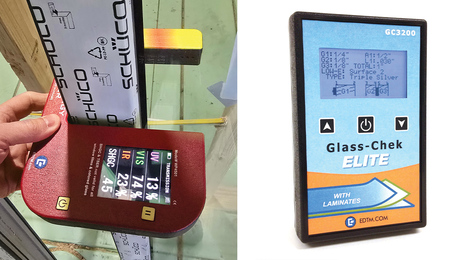
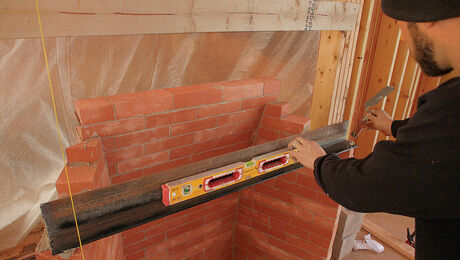

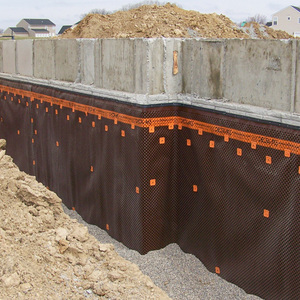

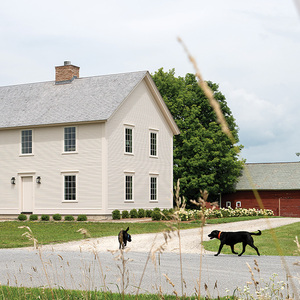





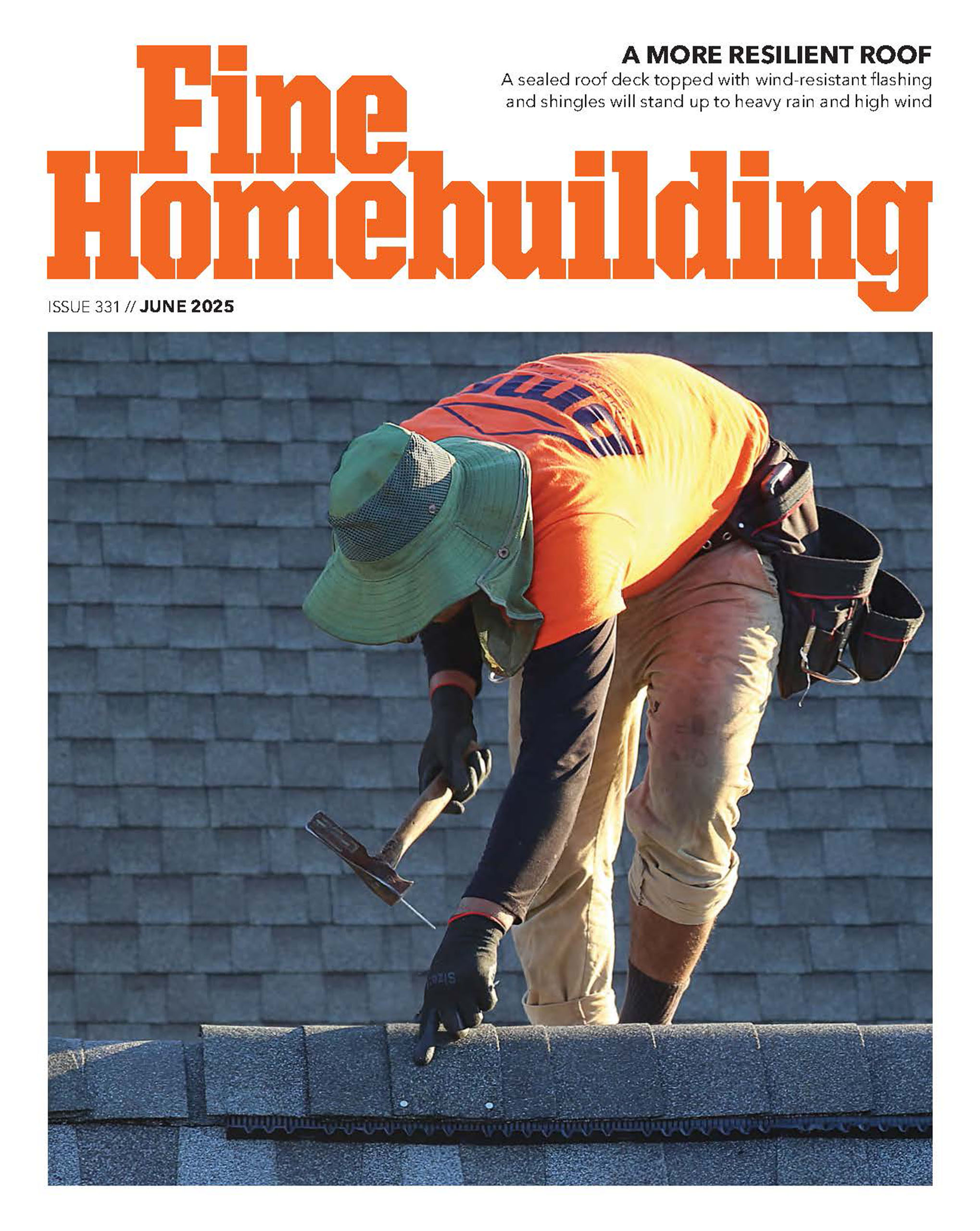







Replies
There's tons of stuff in the archives.
Try searching for hardiplank, hardi, fiber cement and FC Tools.
I'd also recommend the (good) documentation at:
http://www.jameshardie.com
Scott.
Always remember those first immortal words that Adam said to Eve, “You’d better stand back, I don’t know how big this thing’s going to get.”
I'd buy it preprimed / prepainted.
have used siding and roofing guns and for a one time job
I'd just get the hardi blade for the circular saw.
I wouldn't gum up the slider.
shears are nice ... not needed for a small job.
dedicated hardi saw with dust shroud and vac hookup is nice too ...
again ... not needed.
I'd get the hardi blade and blind nail with a roofing gun.
drill and hand nail the last coupla siding nails to finish.
coupla siding guages are great to have.
the cheap ones work ... the gecko are pricier and much better.
for a small job ... again ... thinking I'd cheap out and see how it all works.
then ... think about tooling up for the rest of the house ... that way ... you'll have a better idea of which tools U actually need / want.
Jeff
Buck Construction
Artistry In Carpentry
Pittsburgh Pa
I'm doing the same thing with a sliding patio door. The original siding was 3/4" foam covered with 5/8" plywood siding.
I dedided after much thought and research to install 7/16" OSB, covered with Tyvek, and with a 1/2" foam board over that, followed by the Hardie.
I bought the Makita fiber cement shears, which really do a great job in a straight line, but not as well in a curve as I expected. If I had to do it again, I might try the following:
http://www.amazon.com/gp/product/B0000DCBJH/ref=s9subs_c4_at2-rfc_p?pf_rd_m=ATVPDKIKX0DER&pf_rd_s=center-2&pf_rd_r=0KW1PGW05BQXXAWK00TN&pf_rd_t=101&pf_rd_p=278240301&pf_rd_i=507846
I think they might do better on curves.
I'm using electro-galvanized siding nails with my Max coil coil siding nailer. I just haven't decided on spacing. Hardie doesn't seem to have nailing patterns on their web site, except to keep 3/8" away from the edges and 2" away from corners. They allow up to 24" OC stud patterns, so I guess I will go with 8" vertical nail spacing since the siding is so heavy.
Hardie recommends priming cuts, since the panels are already primed. I am just going to use caulk.
I'm planning om using the preprimed soffit panels to box in the eaves of my neighbors home. And was planing on using a siding nailer and my SCMS with a hardi blade. will use tapcons to attach sleepers through the stucco 16" on center for backing and will box in with sub fascia attached to new 5/4 Winsor one trim.ML
When I get to my gables, I might switch from the vertical paneling to their horizontal siding too, just mainly because of the weight.
The Hardie installation instructions mention a "score and snap" technique which would be great for me, since I really only have about 80-100 total cuts to make. Anybody do it this way? I assume a sharp box cutter blade and some determination? Or is that just a PIA?
It's possible, but lame. It leaves fuzzy edges that look crummy and not the best for caulking. It also takes a few scores to get it so it'll bust straight.
Hardi blades are cheap. Scoring just isn't worth saving a few bucks unless it's for maybe one or two cuts.
Mike HennessyPittsburgh, PA
OK, forget score-n-snap then. So what to you prefer, circle saw with speed square or SCMS?
So what to you prefer, circle saw with speed square or SCMS?
Circular saw
I used a little trim saw with a regular blade for a little while. Then I lucked up and found a pair of Snapper shears for thirty bucks at the pawn shop. They had no idea what they were selling there.
I have yet to do a massive job with the stuff yet, but I've worked with it a couple times. I like it, and couldn't imagine siding with anything else. A roofing gun is a must! The stuff is rather fragile until you get it nailed onto the house. In a pinch I've used a 15 gauge trim nailer, so far so good, but the guys at James Hardie DO NOT recommend it. Its good to use the trim gun for the lower edges after you blind nail it, I shoot the lower corners and every several feet just to lock the panels in.
A few things about edge treatments. James Hardie recommends that you use a six inch wide piece of felt to flash the butted seams before the next coarse goes on. They used to recommend caulking them, and even though Hardi-planks are very stable and do not contract or expand, the sheathing behind the panels do. It is REALLY hard to keep sealant in those butted-seams, so flash them.
You are making a good choice with Hardi-planks. It takes a little while to get used to the stuff, but once you do it starts making a lot of sense and moving quickly.
I sided all day today--about 5 squares or so, and I was the cut guy. I scored and snapped every single straight cut. Used a nibbler on the rake and rips. I've got a Hardi saw but I hate the dust,and I hate cutting the stuff anyway. Here's the technique: You need to have a plank set up or else cut off of the pile. Lay a piece of Hardi on the plank. Score the face once. (You don't even need a pencil, just pull your tape and hold your knife on the measurement) Stand the board on edge, and move your speed square to the back of the siding, lining up the flange of your speed square with the score on the front, and score the back once.Lay the piece down. Set your speed square on the plank, so it't flange supports the siding right at the score. A sharp tap and you're done.
As with sheetrock, short offcuts are problematic. If you have to trim less than an inch, you either grab the nibblers or whatever, or score deeply.I don't have a decent digital camera or I'd post a pic. I've never seen a saw cut any cleaner. Takes a bit of practice to line the scores up quickly, but that's the trick. Occasionally, there is a bit of material sticking out in the center of the piece, like sheetrock, but it can quickly be scraped clean with the utility knive. I can easily cut as fast as my partners can with their saws and nibblers. I have a few more moves to make a cut, but everything I need is carried in my belts--tape, knive, speedsquare. No dust, no cords to manage. You go through a few blades--I think I changed blades twice today.Try it, you'll like it.
Get the electric fiber cement shears. Your life will change. The worst part of the job becomes the easiest. Think quiet, clean, and easy. One day pays for the tool.
When I was cutting the Hardiepanel today, I was thinking "this is too easy"!
Several companies make them, but I think the cutter heady assembly is basically the same.
If you do a lot of Hardie, it will be the best $250 you ever spent.
I have the electric shears made for FC by Kett--that's what I was refering to as "nibblers". I prefer the utility knife.
Yer a better man than I am Gunga Din! ;-)
I always get the "fuzzies" when I try to score & snap. And there's just too many places where you only need to cut an inch or less, or you need to rip a thin strip, so you gotta get out the saw anyway.
I got shears and was glad of it! If you can justify the expense, it's the way to go. But for a small one-off, I'd get out a Hardi blade in a CS, and hold my breath while cutting.
Oh, and don't cut much when the neighbor's hanging out laundry to dry downwind. DAMHIKT. ;-)
Mike HennessyPittsburgh, PA
Yeah, and remember that thread about the most overpriced product? How about adding Hardiblades to that list? Jeesh, you'd think the fewer the teeth, the lower the cost.
"Jeesh, you'd think the fewer the teeth, the lower the cost."
Yeah, but they're made of pure Kryptonite.
Or sumpthin like that. Or maybe they just charge based on the amount of dust produced. ;-)
Mike HennessyPittsburgh, PA
What do you all use for a starter strip? Do you rip a piece lengthwise? That seems like a pain...Also, what texture of Hardi do folks prefer? I was at the Home Depot yesterday and all they have is the Cedarmill finish. Looking at it up close, it looks like it's too much texture, but then I'm sure it's different when it's up on the house and filled with paint. Does Cedarmill look good after install or is it too "fakey"?The HD stuff says that its preprimed on the tag on the rack, but it's a dull grey color. Is it REALLY preprimed? I mean, can I REALLY nail it up over felt paper, caulk the joints, paint the face and be done with it? That sounds WAY too easy!
Yep -- rip one for a starter. It's only a pain if you're scoring and snapping. ;-)
I prefer the smooth finish -- if it's not wood, don't try to make it look like wood. Just like fake ti . . . well, never mind.
And yep, the factory primer is fine -- just paint over it.
Mike HennessyPittsburgh, PA
Well I agree with you about the fakey wood texture, but doesn't the smooth just look like vinyl siding?
Also, does anyone think there'd be any benefit in installing a layer of 1/4 pink foam insulation under the siding (and I suppose under the asphalt paper)?
"If it's not wood, don't try to make it look like wood".
Couldn't agree more. What really has me scratching my head is the hardi that is BEADED with the FAKE GRAIN. 200 years ago when wood was wood the beaded stuff was a finer product that was sanded smooth. The rough sawn stuff never had a bead.
To the OP: The smooth prepainted stuff is fine. You might want to consider going with a different exposure then the standard 7" however. The 7" stuff is starting to look a little "canned". It's usually special order but I've found that no big deal.
Runnerguy
My application has a 4-1/2" exposure, so that's what I'll keep and use the 6.25" boards.So, does anyone have a preference for 15# or 30# felt underlayment?
I always use 30# on roofs, but would use 15# on siding unless I had some left over 30#. Either one will block moisture.
On my current project, I am using Tyvek because it also releases moisture from inside to outside. If there is any chance of water getting behind the paper, Tyvek might be a better choice.
Somebody help! I think I'm overthinking everything!Everything I've read to date leads me to believe that asphalt paper is going to be safer for me to use in my 100 year old house than Tyvek. Anyone want to oppose?I intend to eventually insulate the entire house with cellulose as I reside it, a portion at a time. I won't be touching the interior surfaces. Does this change anything?I have 5/4 trim everywhere that is in pretty good shape, so I don't want to pull it off. Can I just shove my asphalt paper in underneath (on the corner boards and casings) as far as I can and hope that it's good? I'm leaving as much of the old asphalt paper (which is wrapped around the corner, behind the corner boards and casings, I assume) as I can.Since I have 5/4 trim, can I and/or should I install a rigid foam insulation product underneath the hardiboard? If yes, then do install the foam on top of or underneath the asphalt paper? I'm thinking a 1/2 thick material. What should I use? 1/4" or 1/2" Pink EPS or 1/2" Polyiso? I think I've seen reflective foil lined polyiso, should I use that?Or should I just forget about it, wrap the existing sheathing with felt paper and nail up the hardi and not worry about it?
I used the polyisocyanurate with Al foil on one side, but I do not think it matters that much which type you use. Hardie requires a moisture barrier behind it.
If there is a chance of moisture getting behind the moisture barrier, you need to make sure there is a way for it to get out. One way out is at the bottom. Another is to use a wrap like Tyvek which also lets it out everywhere on its surface, but keeps it from coming in on its surface - or at least that is how they advertise it.
If there is no reasonable chance of moisture finding its way behind your foam board, it still needs to be taped. I used they Tyvek tape on the foam seams.
Finally, you have to consider the nail holes. I think this is a relatively minor problem, but one which came into my calculations.
The felt paper will have a tendency to seal in around the nails. The same goes for the butyl or asphaltic tape around your penetrations. The foam board will probably not seal as well, but for all practical purposes, the moisture that could get in is probably insignificant in a good installation. On the other hand, small leaks could allow vapor pressure to push moisture out of the wall.
On my original wall, I found a 3/4" foam board with Al on both sides, covered by 5/8" plywood siding with a 3" pattern.
The foam board had not been taped. Also, the people who built the house had saved some bucks by piecing together small pieces of leftover foam board. The deck had been fastened to the siding over the foam board with joist hangers. This area tended to hold moisture.
The end of the story is that the termites started to enter the rim joist in the damp area behind the deck where the foam board untaped seams offered a nice damp highway. I fixed that problem!
I blasted and soaked the penetration area in case there were any invaders in there.
Then I painted the surfaces in that area with a treatment.
Then I placed OSB over the studs walls, using a good quality 50 yr caulk. Everything was sealed at this point.
Then, like the guy who wears both suspenders and a belt, I put Tyvek over the OSB. It was taped and penetrations were sealed with butyl 6" tape. This was so if in case hell freezes over and some water got into this layer, the Tyvek would let the vapor out.
A layer of half inch polyisocyanurate with Al on one side came next, taped and caulked. The idea was that any moisture coming out of the Tyvek could at least get out the bottom.
Finally, the vertical Hardiepanel was installed, caulked, and painted.
I also used rot and pest-resistant products to rebuild the soffitt and fascia, as well as to mask the corners.
My guess is I won't have any more problems.
I think it is important to have a barrier of some kind on outside corners under the siding, such as felt or Tyvek.
The deck is going in free-standing and separated from the house by 1".
Tyvek vs. tar paper has been an ongoing debate. I've always assumed that Tyvek is better just because it is WAY more expensive, but everyone I've talked to and all the reading material that I've found suggests that there isn't a real reason to worry about it. Tyvek "lets the house breathe," but roofers have been using tar paper on the part of the house that gets the worst of the weather for how long? I think that that proper installation is more important than which of the two you decide to use.
As far as the ridgid foam, don't panic! You don't need tar paper if you decide to use ridgid foam, just tape your seams. Use the pink stuff and use furring strips for your siding.
A roofing nailer is fine for hardi-planks. Also, you can't use a siding nailer for a roof.
JamesHardie.com has all the installation instructions you need.
So well taped insulation board can substitute for asphalt paper?
Well, it depends on who you talk to. In theory, yes, but if you have windows to contend with, it is hard to tie them into the drainage plane with foam. If the foam butts into the window, and then trim or siding goes on that, you have an open joint right back to raw wood, protected only by a bead of caulk. That's a problem IMO. Building paper is cheap insurance IMO.At minimum, if you skip the building paper, you should install a strip of tyeck or something at the top of each horizontal seam to direct water out. Kinda like z flashing.
I think he wanted to keep the original trim, but with the foam, he will have to take it off, clean it up, and re-install it with furring to match the siding installation. Extra window flashing tape can tape the seam between the foam and the window furring. Be the rain drop!
I've done some new construction, not so much a house but screened porches and decks. I've got a deep respect for renovation carpentry, it takes an entirely different set of skills and uses a level of creativity not found with production house building. Deconstruction (not demo) to reconstruction seperates the men from the boys.
Yep, renovation carpentry is a real treat. I just love figuring how to fix someone else's screw-ups. I also especially love that I have to figure out how to do all of this myself because I can't afford to hire anyone who actually knows how to do things right.If it wasn't for all of the kind folks here on the forum, I'm certain wifey would have divorced me years ago...
I don't understand women. If you work alot, your not spending enough time with them. If you don't work, your a worthless slacker. What gives? Mine told me the other day that I spend too much time working on the house. Can you believe that? If I let the thing rot to the ground then I'd be a slacker.
I have found that a comment like that from the wife means something completely different.
I think you can probably change a few things, still spend nearly as much time on the house, and improve the situation.
Good luck with that!
If you ask me, the felt/Tyvek question is one of those things where folks have taken up a firm position on one side or the other without a whole lot of facts to back them up. My own opinion is that they're pretty much equivalent except that you get fewer, and tighter, seams with Tyvek, so you may get a bit less infiltration. Either way, if installed correctly, your house won't collapse. (Perhaps a more important decision is whether to use rain screen behind the Hardi.)
In your case, the issue you will face is the lack of a vapor barrier on the inside. The thought is that, under those conditions, you don't want to seal any vapor inside the wall with a too-tight barrier on the outside. IMHO, unless you make the interior a steambath by overhumidifying, you won't have a problem. Just properly vent moist areas like laundries, baths and kitchens, and you'll be fine. Heck, what most folks consider a "vapor barrier" (like kraft-faced batts) are a joke anyway! If you're still worried about it, you can get interior paint, or vinyl wallpaper, that will help seal the inside walls.
I've been re-doing old houses for 30+ years and never had any problems with either felt or Ty. Take yer pick and join the fight when someone says you did it wrong. ;-)
Mike HennessyPittsburgh, PA
I suppose it is possible, but the idea that Tyvek would stop water from coming in on one side. but would let water pass through from the other side, seems odd.
The two most commonly stated reasons for using Tyvek that I hear is that it is light and you can cover a large area in a hurry.
I'm having a new metal roof and Hardi plank siding put on right now. Both the sheathing and the decking are foil-backed OSB with tar paper.
Tyvek does not let water pass through it. It allows water *vapor* to pass through it. Not one-way -- either way.
It's kinda like Gortex for houses. ;-) The spaces between the fibers are too small for a water droplet to pass, but water vapor can get through.
Mike HennessyPittsburgh, PA
I think you are right, Mike. Either Tyveck or felt would be fine.A lot of it comes down to logistics. Does the OP really want to invest in a roll of Tyveck for a small bumpout? For something like that, tarpaper would be appropriate. We use Tyveck for several reasons. First, it allows us to weatherproof a new house immediately. Felt would blow off without lath, wrinkle, before it got sided. Yeah, you could leave it off until you side, but then you are exposing the OSB to weather which is not a good thing. The other thing is labor savings. We roll Tyveck on while the walls are laying on the deck. That's a big labor savings.That's how it is with new construction. Remodelling is a different story of course.
The thing with asphalt paper is that I can manage it myself. My walls are 10' high and I don't think I could manage a 10' roll of Tyvek by myself. I believe I'll be sticking with asphalt paper...So I cleaned a bunch of stuff up today and it turns out my trim is 4/4 all over (not 5/4 like I said before).Right now, my trim stands proud from the outmost edge of the clapboards about 1/4 - 3/8 of an inch, which makes the claps 5/8-3/4 inch thick at its thickest spots. How thick is a Hardie installation? I suppose it would be 2x the thickness of the material... Hardie is 5/16" thick, I believe, so that makes the thickness of the siding 5/8". That means that I really only have about 1/4" of space "behind" the Hardie and still keep the trim standing proud.What would folks advise I do with that 1/4"? Should I put up 1/4" thick furring strips and make the siding a rainscreen, or should I put 1/4" of fanfold pink foam insulation?
I just replaced the 5/4 trim boards on my house with 4/4. The lapped edge of the planks are just about flush with the 4/4 trim. Not too bad, but a b!tch to weatherproof. You will need to take the trim off if you use foam board. I don't know what area you live in so unless it is cold most of the time, I don't think that the foam board is critical.
I just drew a section of my siding in CAD. I'm going to use 6-1/4" Hardie planks with a 4-1/2" exposure to match existing. That gives a 1-3/4" overlap. If the boards are truly 5/16" thick, then that makes the Hardie assembly a total of 3/4" thick. Pretty much matching my existing clapboards. Doesn't really leave any room underneath for anything but asphalt paper, so that's how I'll have to go.I read somewhere that folding a 3" strip of asphalt paper in half lengthwise and stapling them up where the studs are would act as good enough furring to get a rainscreen. Anyone care to speculate?
It might, I have never tried it. But with 4/4 trim, it might push your siding proud of your trim material. I wouldn't worry so much. I've got 8 1/4 planks with 7" exposure over Tyvek that was installed to minimum standards, but with little attention to detail (no tape, no nail head protection, no butt-joint flashing). I have not had any sub-wall damage as a result of the siding installation. I know because quite a bit of it was taken off and re-installed. Now, bear in mind that as with any exterior cladding, some sort of regular maintenance is required. Even vinyl siding needs regular attention. If you flash properly (don't forget your head casing flashing), and use the right kind of caulking in the right areas, you will minimize the time you spend re-caulking and painting. Remember, house-wrap is the LAST line of defense, I wouldn't sweat it like you are. Copy the manufactuers installation instructions from your computer and follow them.
Tyvek is not that big a deal for a 10' wall. Start at one corner, tack up the top corner, and roll it around the walls. Tack occasionally at the top to keep it square. Then go back and tack it the rest of the way.
If you're using felt or Tyvek, I'd skip the fanfold. You already have a barrier, and fanfold won't add enough insulation to make it worth the time and $$. As for furring, I'd skip it if you only have 1/4". Be very careful with your drainage planes so you don't trap any water behind the siding, especially at headers and sills, and you should be OK.
Mike HennessyPittsburgh, PA
Round here, folks use lath. I'd rather clean septic tanks than rip Hardi if I don't have to. Yeah, yeah, I've got shears and a saw...
For you naysayers who say you can't score and snap fiber cement cleanly, here are a few pics from a garage we just sided.
Sorry about the crude photos. I took 'em with my Blackberry.
Mind you, I'm not saying you OUGHT to do it that way, just pointing out it can be done and some of us Luddites actually prefer it.
Should I use 30# felt or 15# felt underneath?
I have a Senco clipped head framing nailer, are there any nails I can use for Hardie products, or should I just break down and buy a coiling nailer?
And now I see that 1-1/4 to 1-3/4 inch roofing nailers are a couple hundred bucks less than dedicated 2-1/2 inch siding nailers. Hardie's installation instructions say to use either 2" siding nails (0.09” shank x 0.221” HD) or 11 ga. roofing nails (0.121” shank x 0.371” HD x 1.25” long). Since I'm just going through the material and paper into 1/2" solid wood sheathing, can I just use 1-1/4 roofing nails? I'd hand nail 2" stainless siding nails at the bottom of board ends.So: Siding nails or roofing nails, or does it matter?
I use SS nails in a Max siding nailer, but that's probably overkill. Most casual installers just use roofing nails, blind nailed -- a Hardi-approved method. The problem with using a framing nailer with Hardi is that it would probably just blow through the board more times than not. Hardi wants the nailhead just touching, not countersunk at all.
Mike HennessyPittsburgh, PA
I face nail with 1.25 Bostich dbl galv roofing nails (coil) through a roofing gun and they hold like a summich. They are also less likely to over-shoot and countersink, which is against the rules with the Hardie siding.A La Carte Government funding... the real democracy.
Score with the circular saw (about half the thickness of the board), then snap.
Lots less dust, pretty fair cut that you can clean up with a utility knife if necessary.A La Carte Government funding... the real democracy.